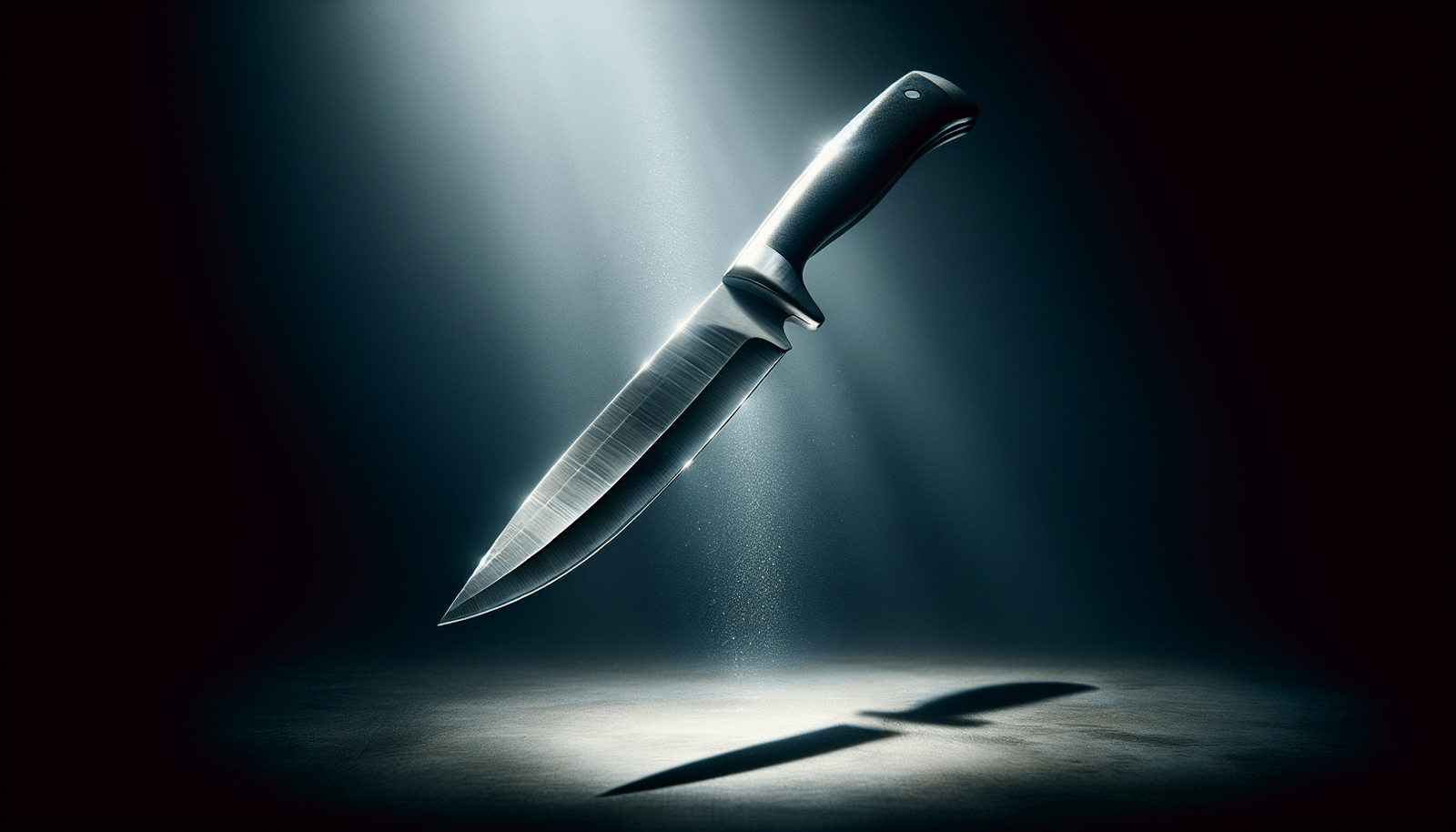If you’re someone who values self-reliance and being prepared for any situation that comes your way, then knife sharpening is a skill you’ll want to master. In the world of survival readiness and outdoor activities, having a sharp knife is a must-have tool. But where do you start? Look no further, because we have the best simplest technique for you. In this article, we’ll share practical tips and tricks to help you achieve the sharpest edge on your knife, ensuring it’s ready for whatever challenges you may encounter. Whether you’re a seasoned outdoorsman or just starting your self-reliance journey, this technique will make knife sharpening a breeze. Get ready to elevate your survival skills to the next level!
Understanding Knife Sharpening
Keeping your knives sharp is essential for a variety of reasons. A sharp knife not only makes your cooking experience more efficient, but it also ensures cleaner cuts, reduces the risk of accidents, and prolongs the life of your knife. Understanding the importance of knife sharpening is the first step towards honing your skills in this essential kitchen task.
Different types of knives have different sharpening needs. Understanding the specific requirements of each knife type is crucial to achieve optimal results. From chef’s knives to serrated blades, each knife has its unique edge geometry, which affects the sharpening angle and technique.
Choosing the Right Sharpening Method
When it comes to sharpening your knives, you have two main options: manual sharpening or electric sharpening. Each method has its advantages and disadvantages, so it’s essential to choose the one that suits your needs and preferences.
For those who prefer a more hands-on approach, manual sharpening is the way to go. This method involves using sharpening stones to manually grind and polish the knife’s edge. Sharpening stones come in different materials and grits, offering varying levels of abrasiveness.
If you prefer a more efficient and convenient option, electric sharpeners are worth considering. These powered devices use built-in abrasive materials to automate the sharpening process. While electric sharpeners offer convenience, they may not provide the same level of control and precision as manual sharpening.
Gathering the Required Tools
Before you embark on your knife sharpening journey, it’s essential to gather the necessary tools. Here are the basics:
-
Sharpening stones: Look for high-quality stones that suit your sharpening needs. Different grits of stones are available for various stages of the sharpening process.
-
Sharpening steel: A honing tool that helps maintain the knife’s sharpness in between proper sharpening sessions.
-
Angle guide: An accessory that helps you achieve a consistent sharpening angle.
Investing in these tools will ensure that you’re well-equipped to keep your knives sharp and in top condition.
Preparation Before Sharpening
Proper preparation before sharpening your knives is crucial for achieving optimal results. Here are three essential steps to take before starting the sharpening process:
-
Cleaning the knife: Before sharpening, make sure to clean the knife thoroughly. Remove any food residue or debris from the blade to prevent potential scratching or damage to the sharpening tools.
-
Inspecting for damage: Take a close look at the knife blade and handle to identify any signs of damage or wear. If you notice any chips, cracks, or looseness, it may be necessary to address these issues before proceeding with sharpening.
-
Securing the knife during sharpening: To ensure safety and stability during the sharpening process, it’s essential to secure the knife properly. Use a non-slip mat or a dedicated sharpening station to prevent the knife from slipping or sliding while sharpening.
By following these preparatory steps, you’ll create a solid foundation for a successful sharpening session.
Mastering the Sharpening Technique
To achieve a razor-sharp edge on your knives, it’s crucial to master the sharpening technique. Here are some important aspects to consider:
-
Understanding the optimal sharpening angle: The sharpening angle refers to the angle at which the blade is held against the sharpening surface. Different knives may require different sharpening angles, so it’s important to research and understand the specific requirements of your knives.
-
Honing vs. grinding: Honing refers to aligning and maintaining the knife’s edge, while grinding involves removing material to reshape and sharpen the blade. Understanding the difference between honing and grinding will help you determine the appropriate technique for your knives.
-
Proper handling of the sharpening stone: When using a sharpening stone, it’s important to maintain a consistent pressure and motion. Most sharpening stones require a lubricant, such as water or oil, to prevent the accumulation of metal debris and enhance the sharpening process. Follow the manufacturer’s instructions for the specific sharpening stone you’re using.
By applying the right technique and practicing consistently, you’ll soon become proficient in sharpening knives like a pro.
Step-by-Step Sharpening Process
Now that you’ve familiarized yourself with the necessary techniques, let’s walk through a step-by-step sharpening process:
-
Setting the sharpening angle: Use an angle guide or your own knowledge to determine the appropriate sharpening angle for your knife. Adjust the angle guide or hold the knife at the desired angle.
-
Starting with the coarse stone: Begin the sharpening process with a coarse stone, suitable for removing nicks and reshaping the blade. Hold the knife’s edge against the stone and follow a consistent motion, moving from the base of the blade towards the tip.
-
Progressing to finer grits: Once you’ve achieved the desired edge geometry with the coarse stone, switch to a finer grit stone to refine and polish the edge further. Repeat the sharpening motion, ensuring even and consistent pressure.
-
Honing the knife: After achieving the desired sharpness, it’s important to hone the knife to remove any burrs or inconsistencies in the edge. Use a honing steel as a final step to align and maintain the edge.
By following these steps and adapting them to the specific needs of your knives, you’ll be on your way to a sharp and efficient cutting tool.
Maintaining and Storing Sharpened Knives
Once you’ve sharpened your knives to perfection, it’s essential to maintain them properly to ensure longevity and continued sharpness. Here are some key maintenance practices:
-
Proper cleaning and drying: After each use, make it a habit to clean your knives promptly and thoroughly. Use warm soapy water and a sponge to remove any food residue or debris. After washing, dry the knife thoroughly to prevent moisture-related damage.
-
Applying knife oil: Applying a thin layer of knife oil can help prevent corrosion and keep the blade in optimal condition. Use a food-safe oil and apply it sparingly to the blade, wiping off any excess.
-
Safe knife storage: Storing your knives safely is essential for both their longevity and your safety. Consider using a knife block, a magnetic strip, or a knife sheath to protect the blade and prevent accidental injuries.
By incorporating these practices into your daily routine, you’ll ensure that your sharpened knives remain sharp and perform at their best.
Troubleshooting and Tips
Even with the best intentions and practices, sharpening knives can sometimes present challenges. Here are some common troubleshooting tips:
-
Dealing with nicks and chips: If you encounter nicks or chips in your knife blade, you may need to spend extra time on the initial coarse grit stone to remove the damage. Be patient and thorough in your sharpening process to restore the blade’s smoothness.
-
Avoiding common sharpening mistakes: One common mistake when sharpening knives is applying too much pressure, which can damage the blade or create an uneven edge. Practice a light, steady hand and maintain consistent pressure to avoid these errors.
-
Testing the sharpness: To test the sharpness of your knife, try slicing through a piece of paper or a tomato. If the knife glides effortlessly and creates clean cuts, it’s a good indicator that your sharpening efforts have been successful.
By being aware of these troubleshooting tips and implementing them when necessary, you’ll be able to overcome common sharpening challenges and achieve optimal results.
Frequency of Knife Sharpening
How often a knife needs sharpening depends on various factors such as usage frequency, cutting surface, and the quality of the knife. Here are some guidelines for determining the right sharpening frequency:
-
Determining when a knife needs sharpening: One common indicator that a knife needs sharpening is a noticeable decrease in cutting performance. If you find yourself applying more pressure to make clean cuts or if you notice tearing or squashing of food, it’s time to sharpen the knife.
-
Factors affecting sharpening frequency: The frequency of sharpening can be influenced by factors such as the type of knife, the tasks it’s used for, and the cutting surface. Knives used for heavy-duty tasks or on abrasive surfaces may require more frequent sharpening than those used for lighter tasks or on softer cutting boards.
By being attentive to your knife’s performance and considering these factors, you’ll be able to determine the optimal sharpening frequency for each of your knives.
Final Thoughts
Regularly sharpened knives offer numerous benefits in the kitchen and beyond. Not only do they enhance your cooking experience by improving cutting efficiency and precision, but they also provide a safer and more enjoyable culinary journey. By taking pride in maintaining your tools through proper sharpening techniques and consistent upkeep, you’ll not only extend the lifespan of your knives but also develop a sense of self-reliance and accomplishment. So, grab your sharpening tools, follow the steps outlined in this article, and embark on your journey to become a sharpening master. Your knives will thank you!

